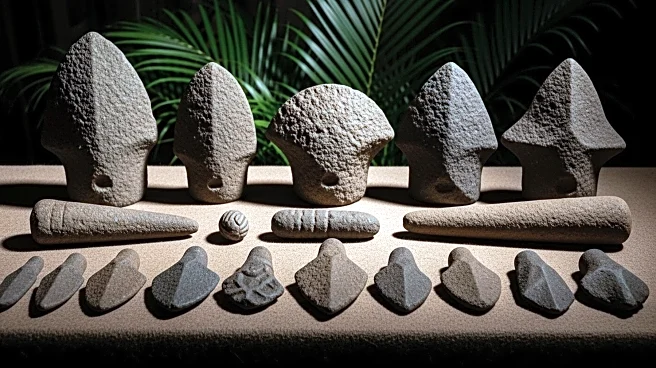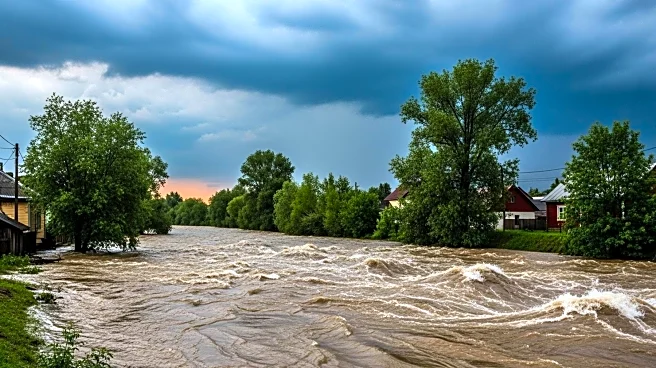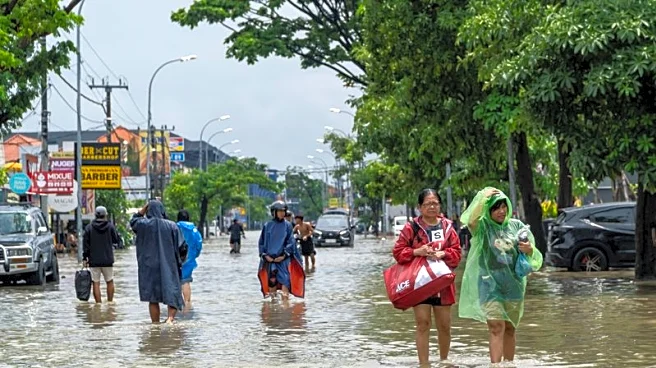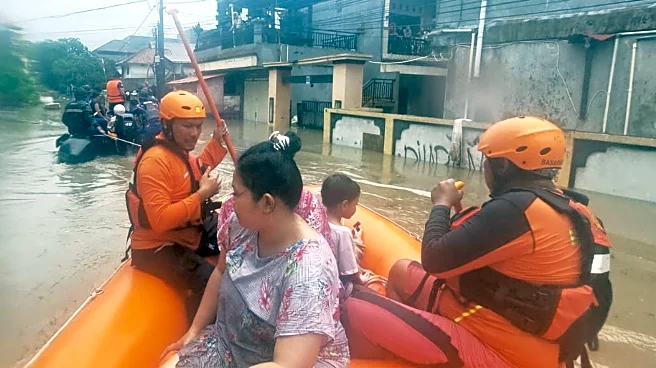What's Happening?
Archaeologists are investigating how humans survived the Toba supereruption 74,000 years ago, one of the largest volcanic events in Earth's history. The eruption, located in present-day Indonesia, ejected massive amounts of volcanic ash, causing global cooling and environmental devastation. Despite these challenges, evidence from archaeological sites in South Africa and Ethiopia shows that humans adapted and thrived, developing new technologies and survival strategies. The study of volcanic glass, or cryptotephra, helps researchers trace the impact of the eruption and understand human resilience.
Why It's Important?
The research provides insights into human adaptability and resilience in the face of catastrophic events. Understanding how ancient populations survived the Toba supereruption can inform current strategies for dealing with natural disasters and climate change. The findings challenge the Toba catastrophe hypothesis, which suggested a severe population bottleneck, highlighting the importance of behavioral flexibility and technological innovation in human survival.
What's Next?
Scientists continue to study volcanic deposits and archaeological records to piece together the impact of the Toba eruption. Future research will focus on identifying cryptotephra layers and analyzing changes in human behavior and environmental conditions. This ongoing work aims to refine the understanding of ancient human survival strategies and their implications for modern resilience.
Beyond the Headlines
The study underscores the importance of adaptability and innovation in human history. By examining past responses to environmental challenges, researchers can draw lessons for contemporary disaster preparedness and climate adaptation. The findings highlight the role of technology and resource management in overcoming adversity.














